Diseases and pests of red currant
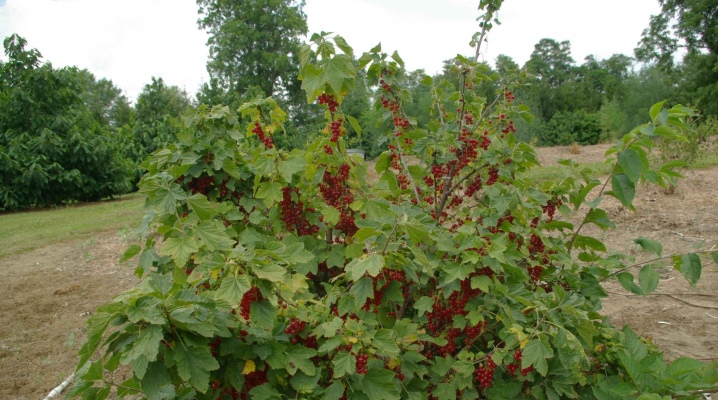
Every gardener is familiar with the consequences of diseases that appear on red currant bushes - these are brown spots, cobwebs, leaf folding. But it is very difficult to know all the causative agents of these manifestations. In the article we will describe the pests and diseases affecting cultivated bushes, we will tell you in what ways you can fight them.
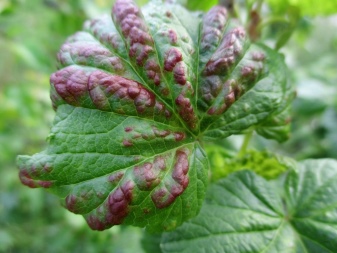

Description and treatment of diseases
Red currants are susceptible to fungal, viral diseases and lesions caused by pests, which include various insects - butterflies, beetles, ticks, aphids... As a result, the leaves appear reddish, orange spots, white bloom, cobweb, spotted bulge, through holes.
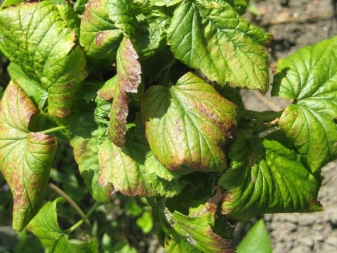
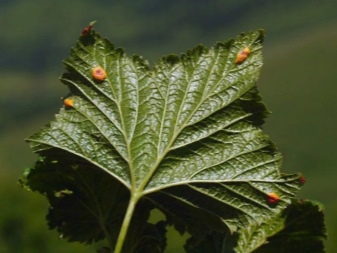
Let's first consider the fungal and infectious lesions of red currant bushes, we will figure out why they dry, and how they should be treated.
Anthracnose
Fungal disease inherent in the gooseberry family. Red currants especially suffer from it. Unlike black varieties, in which only leaves are affected, red currant bushes also lose berries, petioles, stalks, young green shoots.
At the beginning of summer, spots appear on the leaves - red, brown, brown, greenish and yellow. It all starts with a small tubercle in the center of the leaf plate, which spreads out and occupies the entire surface, changing its color. Despite the early summer, currant leaves die and fall off, as if in autumn.
The first spots on the leaves and bark signal the onset of the disease. It is necessary to start treatment, otherwise the bush may lose all leaves and young shoots. The disease spreads especially quickly in steady hot weather.
Ways to fight:
- treatment of the bush and soil in early spring or late autumn with a three percent drug "Nitrafen";
- spraying with fungicides during budding and after harvest.


Goblet rust
The disease is typical for bushes growing near wetlands, since the fungus of this species needs sedge as a transitional stage. The yield loss is about 80%. The situation becomes even more disastrous in rainy weather.
The disease manifests itself with orange growths that grow and destroy the ovaries and leaves. The growths burst, the spores fall on the sedge and continue their life cycle on it. In the spring, they again find themselves on the currants, and everything is repeated.
Ways to fight:
- to avoid infection, you should not grow currants in wetlands;
- from early May to mid-June, you need to treat the bushes with Bordeaux liquid (one percent solution) three times.
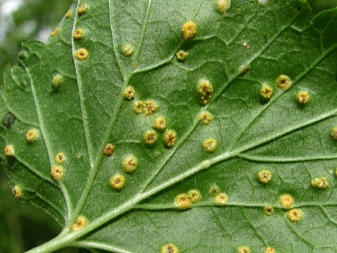
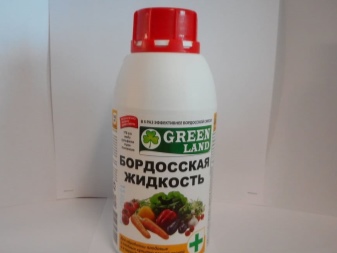
Septoriasis
A fungal infection called white spot. Red currant is infrequently affected, black varieties of plants are more affected. On the leaves, white lesions with a dark border are observed, on which black blotches appear - conidia of the fungus. The disease develops very quickly, the bushes lose their foliage early, weaken and reduce immunity before the onset of winter.
Ways to fight:
- use a solution of copper sulfate;
- before bud break, spray with Bordeaux liquid (3%);
- the affected branches are cut and burned;
- use fungicidal preparations for treatment;
- mineral fertilizers enriched with copper, boron, manganese are applied to the soil;
from folk remedies, an infusion of garlic is used.
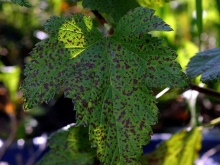
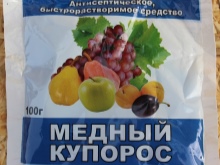
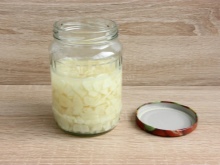
Spheroteka
The second name for a fungal disease is powdery mildew. Gardeners should be alerted by the appearance of white spots on the front of the leaf. Soon they grow and cover the leaf completely. The bush looks like it has been sprinkled with flour. The incubation period of the fungus is less than 10 days, reproduction is rapid, especially in warm, humid weather. The affected bush stops growing and withers noticeably. Concomitant reasons for the spread of spheroteka can be a dense planting of bushes or an excess of nitrogen fertilizers.
Ways to fight:
- before the start of sap flow, the bushes are treated with fungicidal compounds, such as "Topaz";
- already infected currants are treated with other types of fungicides - "Quadris", "Fitosporin";
- colloidal sulfur is used;
- use Bordeaux liquid;
- as folk remedies, they are treated weekly with serum.

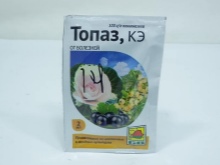
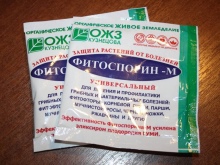
Reversal
The second name for the disease is terry, it is caused by viruses (Riber virus). The carrier of the disease may be a kidney mite or poor-quality planting material, untreated garden tools. The affected leaves change, turn into three-lobed, with coarse veins, they become small and pale. Instead of flowers, scaly formations appear, hence the name of the disease "terry". There are many shoots, but they look underdeveloped and deformed.
Ways to fight:
- treat bushes with 1% colloidal sulfur composition;
- sprinkle plants with boiling water from a watering can in early spring;
- pour garlic solution.
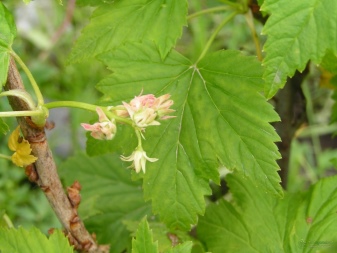
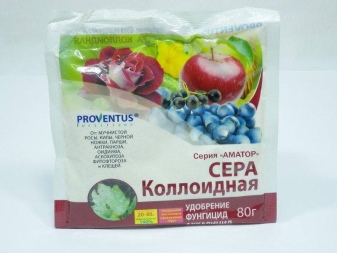
Pest Review and Control
Red currants, like other cultivated bushes, are susceptible to pest attacks and, unfortunately, there are many of them. Let's talk about the most common types that can harm garden currant varieties.
Kidney mite
A very dangerous pest, it looks like a tiny worm no more than 0.2 mm in size. The disease can be recognized by the unnaturally enlarged buds of the plant. They look large because the female mite lays eggs in them. With the first flowers and leaves, young parasites leave the clutch, sucking out all the cell sap. The buds lose their development, which negatively affects the life of the currant bush.
A kidney mite is dangerous for the entire gooseberry family; it is capable of transmitting viral diseases, for example, currant reversion. Due to the incurability of this disease, you have to get rid of the bush and burn it urgently so that other plants do not suffer.
Ways to fight:
- identification and destruction of all diseased kidneys;
- treatment with acaricides ("Nissoran", "Envidor"), before flowering, before the appearance of ticks, two treatments are carried out with an interval of one and a half weeks;
more toxic spraying can be done after picking berries, during this period such preparations as "Phosphamide", "Accent" are used.
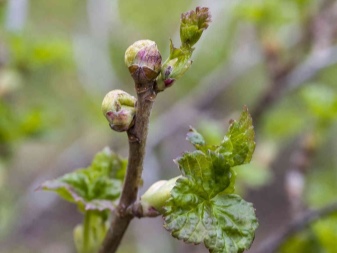

Spider mite
The parasite, up to 1 mm in size, has a yellow color, by autumn it becomes reddish. In dry and warm weather, the tick reproduces actively, each female lays up to 7 eggs a day, attaching them to the seamy side of the leaf. The disease can be recognized by red and yellow spots on the lower leaf plates. All summer long, pests destroy bushes, drinking juice from foliage and berries, enveloping them in their cobwebs. And in winter, plants hide in the bark and freeze until the arrival of warm days.
Ways to fight:
- since insecticides do not work on ticks, toxic acaricides are used in the fight against them - "Fufanon", BI-58; processing is carried out in dry, calm weather, taking safety measures, that is, in a respirator, gloves and glasses;
- watering with a strong stream of water can be used as a fight;
- a thorough examination of the shrub and manual removal of affected leaves helps.
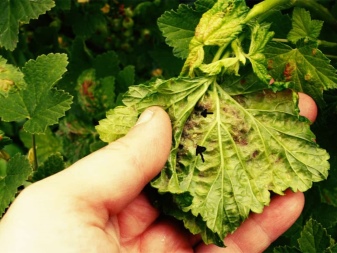
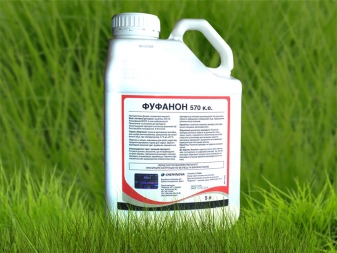
Berry sawfly
Insect up to 4 mm in size with a yellow and earthy color. The sawfly lays eggs in the flowers of red and black currant bushes. Larvae grow up to 12 mm, three times the size of an adult. Their long, yellow-headed bodies have a pale, wrinkled appearance.Parasites actively destroy the juicy pulp of the berries. You can recognize the invasion of pests by the distorted, elongated dark currant berries.
Ways to fight:
- during the freezing of sap flow (in spring and autumn), they well dig up the soil around the bush;
- the plant is spud up as high as possible, even before flowering;
- spraying is done with insecticides.
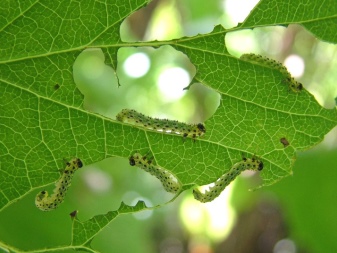
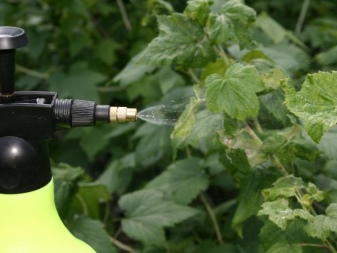
Gooseberry moth
A variegated gray-brown butterfly lays eggs in half-open buds during budding of currant flowers and other gooseberry plants... The hatched larvae eat the ovaries, and the caterpillars feed on berries, enveloping them in cobwebs. After 30-40 days, having gained strength, they descend from the currant bush into the ground, where, wrapped in a cocoon, they become pupae. There they hibernate in order to become butterflies in the spring and begin their life cycle again.
Ways to fight:
- collect and burn damaged berry clusters;
- trying to destroy the moth cocoons, in the fall, the soil is carefully dug up along with the compost;
- in spring the plants are treated with Iskra, Aktellik insecticides;
the larvae are sprayed with Fitoverma.
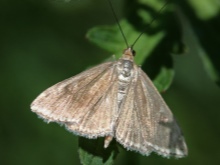
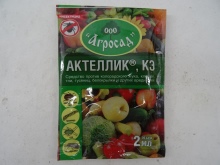
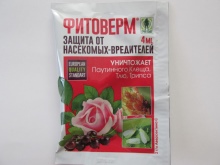
Moth
Quite large butterflies, with black and white shades, eat currant leaves. With a large-scale invasion, they can completely destroy the bush. You can notice the attack of the moth by the presence of through holes in the leaf plates of the red currant.
Ways to fight:
- collecting caterpillars and cocoons by hand;
- insecticide treatment;
- the use of folk methods - spraying with decoctions of bitter wormwood, common tansy, hot pepper.
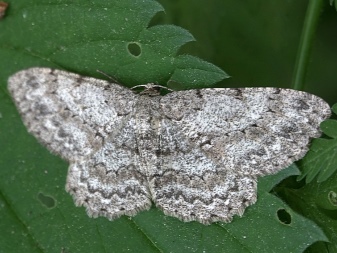
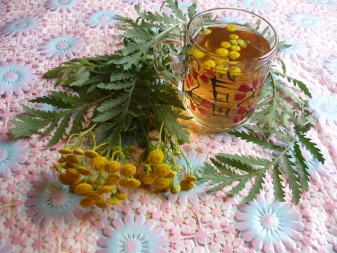
Currant glass
The glass-maker is a butterfly with a striped black-and-yellow body and transparent narrow wings. It has larvae up to 3 mm in length, white with a dark head. They hibernate in the shoots of bushes and destroy them, eating the structure from the inside. In spring they pupate in the same place, without leaving damaged branches. Butterflies appear from pupae during flowering of currants. They lay eggs at the very buds. After a couple of weeks, the caterpillars that appear penetrate the young shoot and, feeding on it, create their own harmful tunnels. The branches of the bush cease to develop, gradually wither. Caterpillars live inside the shoots for 2 years, during which time they can destroy up to 25% of the renewed branches of the bush.
Ways to fight:
- the affected shoots are cut out and burned, preventing the spread of pests to healthy bushes;
- the plants are sprayed with karbofos 1.5-2 weeks after flowering - 80 g of the drug is diluted in 10 liters of water;
- as a folk remedy, they use intercutaneous planting of calendula flowers, marigolds; garlic or onions are planted around the currants.
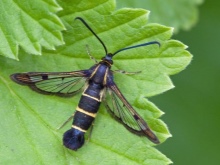
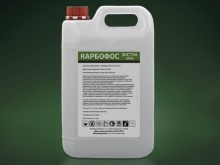
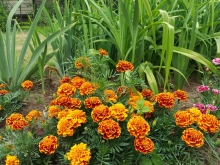
Gall aphid
This pest prefers red currant leaves most of all, they are more tender than other species of the gooseberry family. Aphid is an insect, about 2 mm in size, has an oval translucent yellowish body. It sucks out the juice of young leaves, hindering the development of the entire bush.
The larvae appear after winter, as soon as the first leaves begin to develop. An indicator that the plant is infected will be brown swollen spots on the leaf plates. The invasion of the currant continues until its leaves grow and become coarse. Then the females with wings fly over to softer and more succulent grass to continue breeding.
In the fall, they return to the currant bushes and lay their eggs for the winter.

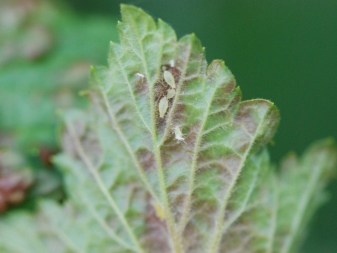
Ways to fight:
- before bud break, the bushes are treated with "Nitrafen" (300 g per 10 liters of water);
- you can use the insecticide "Biotlin" for spraying before flowering, apply in dry calm weather;
- if the plant is severely affected by aphids, they are treated with karbofos (before flowering and after harvest);
- from folk remedies for spraying, infusions of chamomile, tobacco are used, mixing them with a soapy solution;
- tomatoes are planted between the bushes, marigolds - aphids cannot stand their smell;
- their natural enemy, the ladybug, copes well with the pest, which can destroy up to 40 parasites per day.
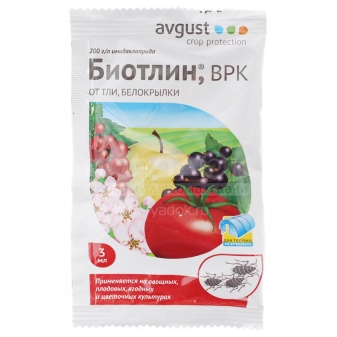
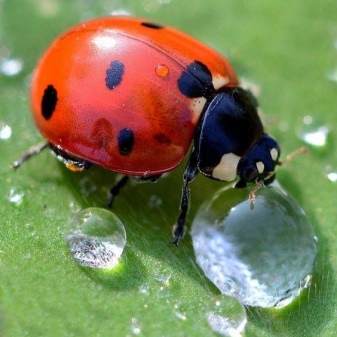
Currant goldfish
This insect is an elongated centimeter beetle, endowed with a greenish color with a golden tint, hence the name "goldfish". Beetle larvae develop in young shoots, eating them from the inside and causing great harm to the bush. Adults leave the shoots in June and begin to feed on the leaves, continuing to destroy the currant bush. Females lay eggs on the young bark of the shoots, the hatched larvae bite deep into the branches and hibernate in them. In the spring, the cycle is repeated.
Ways to fight:
- the affected part of the bush is removed, therapeutic pruning is performed from spring to late autumn;
- with a solution of karbofos, the plant is sprayed during the mass emergence of insects.
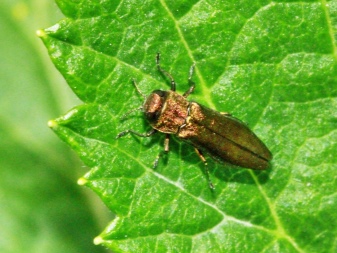
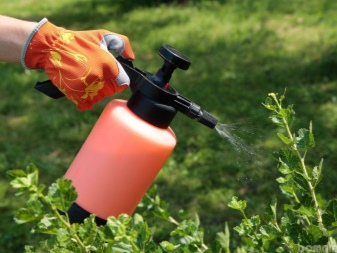
Leaf roll
A light brown butterfly with a wingspan of 3 cm. She was named a leaf roll for the ability of caterpillars to hide, wrapping themselves in currant leaves, which become like tubes. This is a very dangerous parasite, as in a season it can destroy up to 80% of the green mass of a bush by eating leaves, flowers and buds.
Way of struggle:
- the leafworm has its own natural enemies, it is good if they live nearby - they destroy the harmful caterpillars of the titmouse, wagtail, flycatcher;
- in case of obvious damage to the bush with leaf rollers, insecticidal preparations are used.
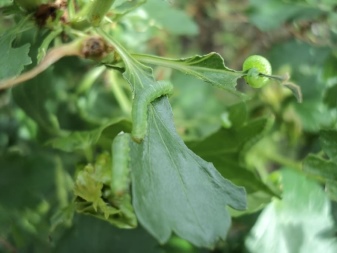

Gallica
Small long-winged beige insect, the larvae of which destroy the young tissues of the red currant bush. Signs of damage will be cracks and ulcers on the bark of branches, deformation of buds and leaves, and falling flowers.
Way of struggle:
- when lesions are found, the branches are immediately removed, the bush is trimmed and the infected material is burned;
- for the winter and spring they dig up the soil well, mulch the currant root system with compost or peat;
the bushes are treated with karbofos before flowering; spraying can be repeated only after harvesting.
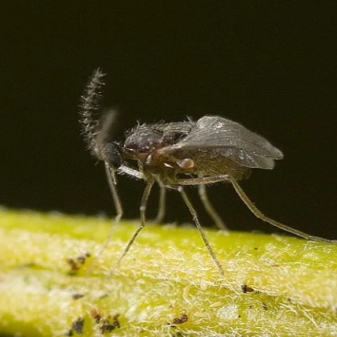

Gray weevil
The beetle is found on almost all fruit bushes and trees, including red currants. For an elongated head in the form of a trunk, it is called an elephant, a furrowed bevel. The insect hibernates in the ground right there, under the bush. In the spring, it climbs into the buds and eats them away, when buds and leaves appear, its diet expands significantly.
Ways to fight:
- before the buds swell, the bushes are sprayed with insecticides, for example, "Mospilan" or "Aktara";
- from folk remedies, they use decoctions of conifers and tobacco.
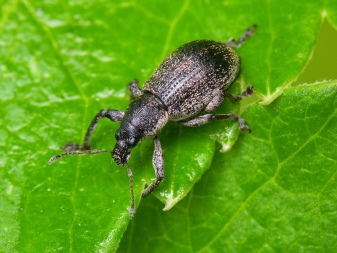
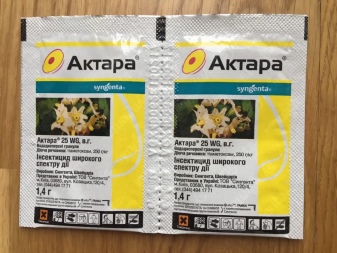
Prevention measures
It takes hard work to grow healthy, sturdy shrubs. You will have to work in the struggle for the harvest throughout the year. Correct agricultural techniques will help to cope with parasites.
Autumn prevention
Autumn care for currant bushes consists of several steps.
- Remove and burn dry fallen leaves.
- Make a deep and thorough digging. Lumps of earth should be broken up and loosened.
- It is necessary to prune, free the bush from dried and unhealthy branches, thin out the crown. It is better to choose sunny days for work, then the sections will not rot and will soon dry out.
- After pruning, you need to immediately treat the plant and soil with drugs for fungal diseases, for example, "HOM".
- A week later, treat the bush and soil from pests with karbofos or other compounds.
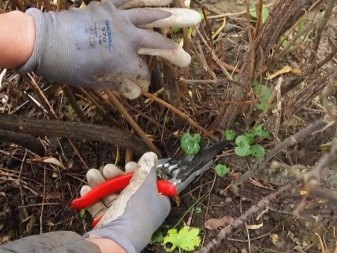
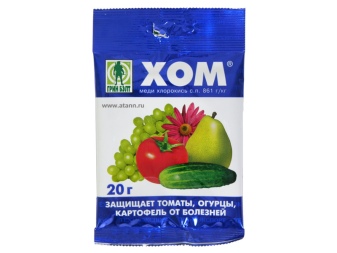
Spring prevention
Spring prevention is just as important as autumn prevention. Consider what needs to be done after winter.
- Use a fan rake to remove all organic waste, with it, a large proportion of wintering pests will disappear.
- Next, you need to loosen the soil well, to saturate the roots with oxygen, and strengthen the bush. This will help the plant acquire pest resistance.
- After the snow melts, the ground will gradually dry out, the bushes will need watering. In the absence of precipitation, it can be carried out once a week.
- When the plant is ready for awakening, but the buds have not yet begun sap flow, spraying is carried out. Sometimes gardeners simply spray boiling water on the bush, killing pest larvae and fungus.
But you can take more radical measures - before blooming buds, treat the bushes from fungal diseases, spray them with chemicals to combat gall aphids before flowering, and also treat with Bordeaux mixture.
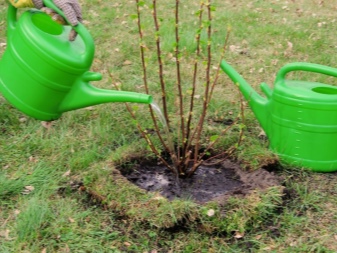

Summer prevention
In summer, in addition to watering and fertilizing, the fight against diseases and pests continues.
- When ovaries have formed on the bushes, it is no longer possible to carry out chemical toxic treatment. Therefore, it is better to go to the use of folk remedies - infusions of onion peel, dandelion, wormwood, garlic with the addition of a soap solution.
- Must be inspect bushes and manually rid them of parasites, remove affected branches, remove caterpillars.
- So that pests do not rise from the soil to plants, the soil should be loosened frequently.
- It would be nice to plant herbaceous plants near currant bushes that would attract lacewings, ladybirds and other natural enemies of aphids and spider mites.
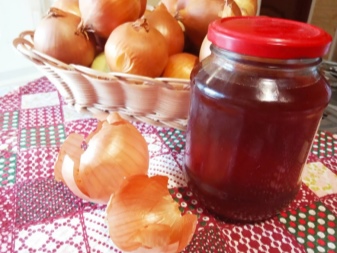
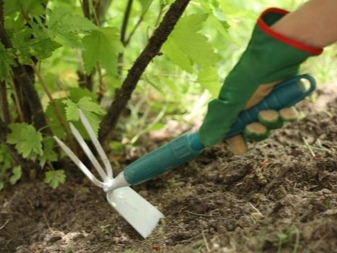
Weed control will also help keep pests from weeds on your bushes.
Resistant varieties
There are many varieties of red currants, but there are no absolutely resistant to all diseases. Some are more immune to pests, others, such as the Temptation and Kipiana varieties, to fungal diseases. You should ask what diseases the bushes suffer in a particular region and acquire types of red currants that are resistant to them. We offer a description of more resistant and strong varieties.
- "Victoria". An early high-yielding shrub, bred for the European climate of the middle zone, frost-resistant, resistant to anthracnose, rust.
- "Faya is fertile." A winter-hardy bush, bred in the USA, with a medium maturity. Little susceptible to goblet rust, spheroteca, anthracnose.
- Chulkovskaya... An early variety popular in Russia. Winter-resistant, drought-resistant, immune to fungal infections, but can become ill with reversion.
- Roland... The Dutch variety resists fungal diseases well.
- "Alpha"... Endowed with immunity to ashes caused by the fungus.
- "Cherry Viksne". Anthracnose resistant variety.
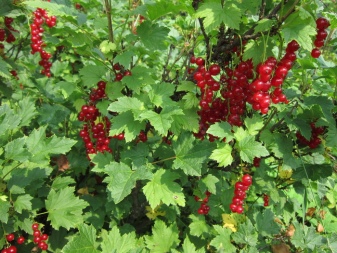
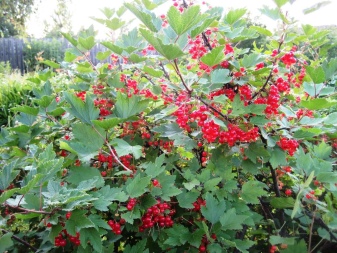
If you choose the right variety suitable for your region and take good care of it, red currant bushes will definitely delight you with a good harvest.













A very good and helpful article. Thanks a lot!
The comment was sent successfully.